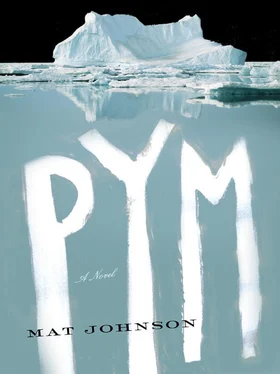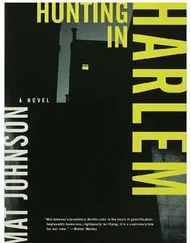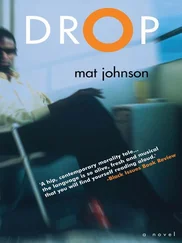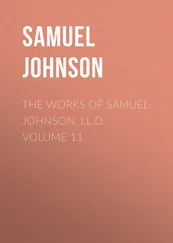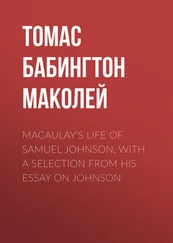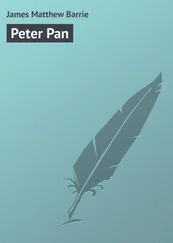† I often forget that to some I actually look “black,” not just ethnically but along the “one drop” line. I become comfortable in one category in the world’s eyes and then am surprised by the next person’s interpretation when it’s altogether different. The difficulty lies not in the categories of looking “white” or “black” but in the inability to simply choose one self-image to rest in, never knowing how the next person will view or interact with me. In that sense, Mrs. Karvel’s discomfort with my presence as a Negro was more comforting to me than the trepidation I often feel not knowing how I will be perceived.
‡ Mostly at the zoo. And the mall.
§ Or possibly rising, I was never quite sure.
IN the two weeks it took to clear and sow a patch of land big enough for a suitable amount of vegetables to be grown, my head was in my job. My heart, though, was still in the frozen hell along with Angela. It hurt, and when it didn’t that was only because it had frozen numb. I thought of her, and of them, often. But not too often. I couldn’t call, I couldn’t write, and I had no real power to change this situation. So I made myself busy in work instead. And as I labored, I learned the truth behind the mysteries of this new world where I found myself. I discovered the smell of lavender was not coming from the flowers of the same name: it was pumped out from the air ducts that lined the far walls and appeared in the bushes, through vents disguised in concrete made to look like igneous rock formations. After a while, I didn’t take notice of it, except during those times every few hours when the smell cycled, and all of a sudden there was a new odor in the air, spearmint or rose, or lemon scent. My favorite was the wave of jasmine that hit at exactly 12:30 P.M. every day, because this meant it was time to take our lunch break.
The vivid floral bushes that surrounded everything in this landscape were similarly assisted in their otherworldly blooms. Part of the reason that it took us so long to clear the space we needed for our vegetable garden was that there were so many different water lines leading out to the fauna beyond. These messily woven hoses would have been hard to untangle in themselves, but what made it even more difficult was that each hose contained water with a different color ink. There was pink water to make the pink bushes pinkish, purple water to make the purple flowers more purplectic, red water to make the red flowers appear to bleed the new blood of the vegetative world. And to even call it water is not truly accurate, because there was not only an ample amount of paint in these concoctions, but also a good amount of steroids, to keep the plants in perpetual bloom. These colored lines shot around the room in miles of tubing, crossing over each other to deliver their gifts in seemingly random order. *
The animals too, while appearing carefree (though really not wild), lived a carefully maintained existence. The white rabbits, for instance, were managed as closely as any rosebush. The afternoon following my discovery of a litter of fresh young rabbits hopping around close to the stream trying to taste what it had to offer, the bunnies were gone. Clearly they were picked up and moved out of the main arena, although what fate they headed to I didn’t want to think about. Mrs. Karvel served a stew that very evening, but maybe the painter was right and this was just coincidence. Likewise managed were the white birds who populated the upper regions of the terrarium, the ones that liked to sit on our cottage’s nonfunctioning roof and coo loudly. Each evening after supper these birds were gathered up by hand and placed behind the inner dome in cages, only to be released the following morning. Why anyone would make the effort to transport a dozen pigeons down to Antarctica I couldn’t understand; just because they were white didn’t seem enough reason. The birds’ feces were white too, but they weren’t cherished. All the animals were white: I heard some scurrying in the walls while sleeping on my mat and half expected to see a white lab mouse run by.
The person who did all of this work, the person who did all the work in the dome except for Garth and me, was Mrs. Karvel. I woke up every morning to the sound of her setting up her ladder to dust the wide leaves of the trees with her rainbow-colored feather duster. By the time I was dressed and down at the river for a drink, she was usually finishing combing it of any unsightly floating objects with a pool net, having cleaned the filter already. It was Mrs. Karvel who removed the dead monarch butterflies, placing them gently into Ziploc bags. †It was Mrs. Karvel who lit the very sun in the sky: we could see her shadow behind the ceiling’s façade as she changed the lightbulbs accordingly. All of this was done in addition to her preparation of meals, laundry, and more mundane duties. If she slept, I’m sure she did so fully dressed, with a ladle in one hand and a Swiffer in the other.
“That’s why she wants to leave here. She just needs more help,” Garth dismissed: he wanted a petty reason for the rejection of his utopia. Sounded like a good enough reason to me, though.
In contrast to his wife, the great painter himself went to bed early and with regularity in timing. This I knew because the second he went down, the world went dark, the sunset simply blowing out, being replaced by the faintest of stars, stuck to the roof in the form of glow-in-the-dark decals. In the last stage of our garden installation, this was our cue to begin work, we having switched our work hours from the daytime to the night by that point. This was done by the request of Mrs. Karvel, and while no explanation was given, it seemed clear the reason was that, although Mr. Karvel wanted us to do this work, he wasn’t interested in seeing it.
Working nights, I began to be able to tell when it was that Thomas Karvel not only went to bed but fell fast asleep as well. It wasn’t that he snored or, if he did, that his apartment was close enough that I could hear. What I would hear instead was the sound of his waterfall, whose roar accompanied the radio voices every moment of our day, spontaneously ceasing its voluminous Kool-Aid spew. The water went off, and the loudspeakered pundits with it. It was an abrupt silence, as if someone had simply turned off a faucet, and this of course is exactly what Mrs. Karvel did. Sound removed, the artifice of this environment was even more obvious, because without this roar a second, more mechanical one was revealed from the boiler room. This was clearly the waterfall’s primary purpose: to mask the bass intrusion of the engines that kept this South Pole oasis a nearly tropical seventy-two degrees Fahrenheit. The waterfall was only off for maybe an hour, long after midnight. After Mrs. Karvel had entered the little door below the lightly dripping fall and attended to whatever hot and agitated machinery the room held, she emerged, climbed the earthen stairs to their apartment, and turned the waterfall’s supply back on, its contents pouring down again and thus hiding the little door below it in both sight and sound. Karvel himself restarted the taped verbal spew hours later.
Once, after two weeks on our plantation, I was returning the dishes from our dinner to the kitchen to save Mrs. Karvel the bother. The painter himself was out on his deck, standing over his waterfall, staring at a canvas in the same way he had been off and on for a few days now. This canvas rested on an easel, and Karvel would look at it, get up as close as he could, and then step back and look at the room, repeating the action every minute or so, pausing at both places of inspection before switching again. As I walked closer, I tried to figure out what the hell he was focusing on but couldn’t — his eyes definitely looked at different parts of his expansive view. Maybe his subject moved, I figured, maybe it was a bird or something and he was trying to find it again (although as far as I was concerned one albino pigeon looked pretty much the same as any other). I climbed the stairs, prepared to head for the kitchen, and as my head peaked onto the landing I got a good glimpse of Thomas Karvel close up, without him seeing me. That’s when I noticed the weird thing. He had no brush. No brush, no paint. Nothing but the painting itself, which he walked up to so close that the oil almost touched his nose.
Читать дальше
